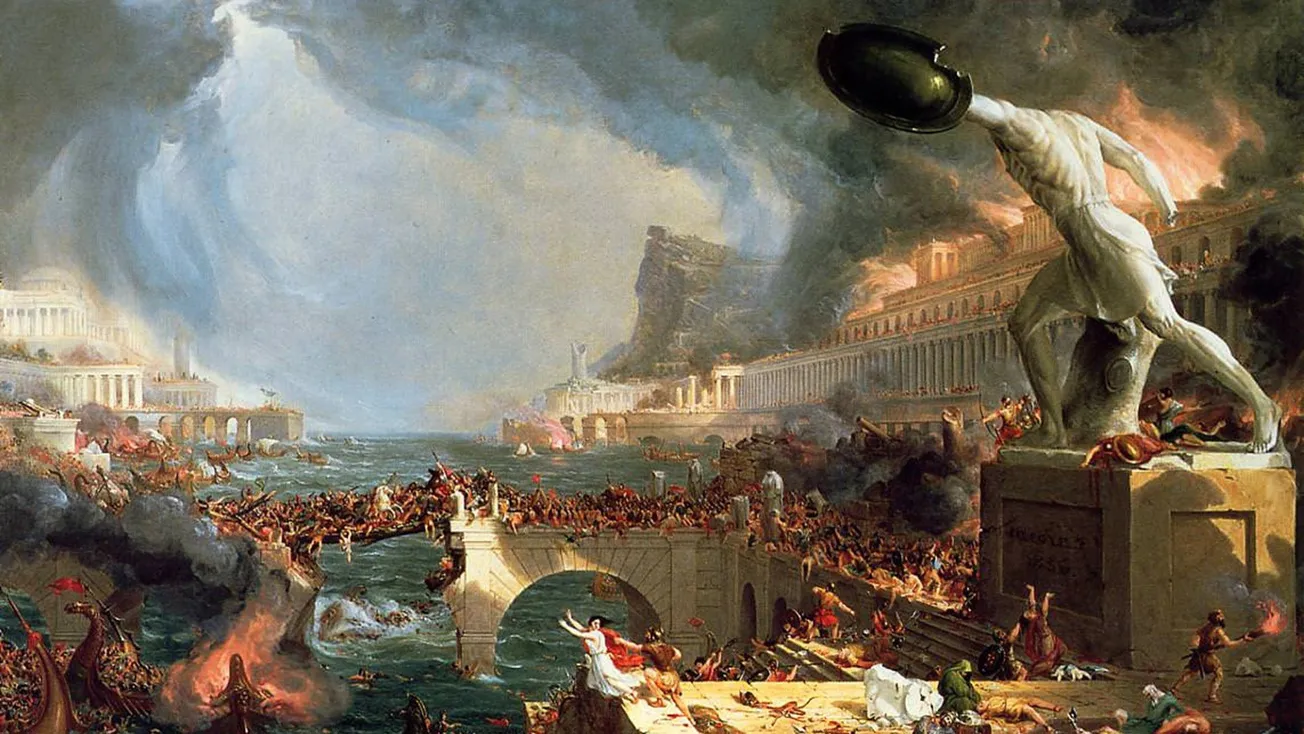Table of Contents
Rome, as the saying goes, wasn’t built in a day. But how was it built? The origins of the Eternal City have long been shrouded in myth and legendry, but archaeological investigations over the last couple of centuries have shed light on how a collection of fortified hilltop villages gradually became one of the greatest cities of the Classical World, centre of an empire that spanned from Ireland to Iran.
First, the legends.
According to information transmitted by ancient authors, the place where Rome originated was inhabited from ancient times and attracted foreigners. The first colonists of Italy were the ancient Hellens, including the famous heroes Hercules and Evander. Then, after the fall of Troy to the coast of Latia, the ships of the Trojan fugitives, led by the hero Aeneas, landed. All Trojans were exhausted by wanderings, and one of the Trojan women offered to stop swimming and burn the ships. Her name was Roma; There are versions according to which the city of Rome was named after her. One of the local kings, the Latins, kindly met the Trojans and even gave his daughter, Lavinia, to Aeneas. In honor of her, Aeneas founded the city of Lavinius.
About History
From the Trojan Aeneas descended a line of kings. The 14th king, Numitor, was overthrown by his brother Amouli. To forestall descendants of his brother seeking revenge, Amouli murdered Numitor’s son and sidelined his daughter, Rhea Sylvia, by appointing her as a Vestal Virgin. Except that Rhea Sylvia was “visited” (ie raped) by the god Mars. The resulting children were the twins Romulus and Remus.
Amouli the usurper attempted to intervene again, ordering the twins be drowned in the Tiber. Instead, they were saved and suckled by a she-wolf. They were brought up by a shepherd named Fastul. Eventually, they grew into men, killed their usurping granduncle and restored the throne to their grandfather Numitor.
Numitor sent the brothers to establish a new colony in the nearby Alban hills. But the brothers disputed where exactly to build the city. Romulus killed Remus and became the first king of Rome.
The line of kings ended with Lucius Tarquinius the Proud, who became famous for his tyrannical rule and was expelled by the Roman citizens. A republic was proclaimed.
So much for myth and legend: what does history say?
Initially, fortified settlements – think of Maori Pa – were built on the Latin hills.
In the VIII century BC a group of primitive settlements appeared in Latia, on the hills of Palatin, Esquilina, Ceelia and Quirinale. The fortified villages were tribal villages located on the tops and upper slopes of the hills. The marshy lowlands between them became habitable only with time, when people began to drain them. The inhabitants of the Palatine Hill burned their dead, like other Latin tribes, while on the Quirinal hill, the deceased were buried in the ground, in wooden decks. Therefore, it is believed that the Palatine and part of Celia belonged to the Latins, and the northern hills – to the Sabines.
Slowly, these Bronze Age hill forts became small towns. The small towns spread and gradually merged over the next century.
The inhabitants of Esquiline Hill and Palatine Hill, and also the valley of Subura lying under it, were the first to unite. On the Palatine was built the fortress of this new village. The inhabitants celebrated it annually with the festival of “Septimontium”, the name of which comes from seven stops of the festive procession. Subsequently, this name gave reason to believe that Rome originated on seven hills. Soon the village expanded with the accession of the Quirinal communities. In the same VII century BC Tselius was populated by Etruscans and was also included in the emerging city.
A hundred years later, the area that became the Capitol was inhabited, and the lowland between the hills became a common market. In time, this became the centre of political and social life in the growing city: the Forum. A fortress was also built on the Capitol.
At that time, the people of Rome consisted of three tribes, corresponding to the Athenian ones. Their later names are known: titles, frames and lucers; It is believed that the tribes corresponded to the ethnic structure; so the frames are the Latins, the Titsii the Sabines, and the Luthers the Etruscans.
A military democracy likely emerged to govern the Roman community, with its main political institution, the comitia, a collection of soldiers.
Thus, by uniting various villages into a single community, Rome arose.
About History
Rome began as scattered wattle-and-daub huts. Crooked streets wound between them. The marshy lowlands were a breeding ground for malaria.
But the city was also conveniently sited: the hills were a natural defense, while trade flowed along the navigable Tiber river. And ruled by a militaristic semi-democratic caste with a penchant for stealing from and conquering neighbouring tribes, the muddy town was destined to become the capital of a world empire.









